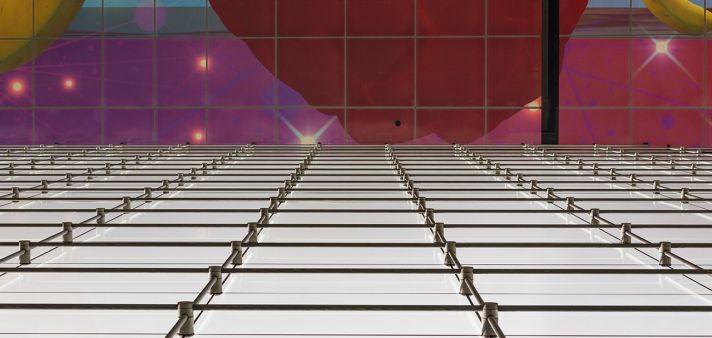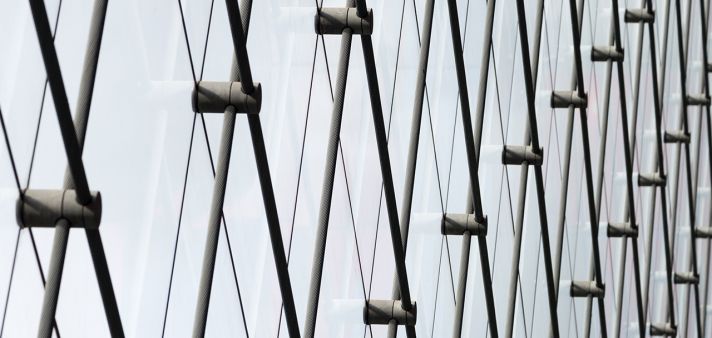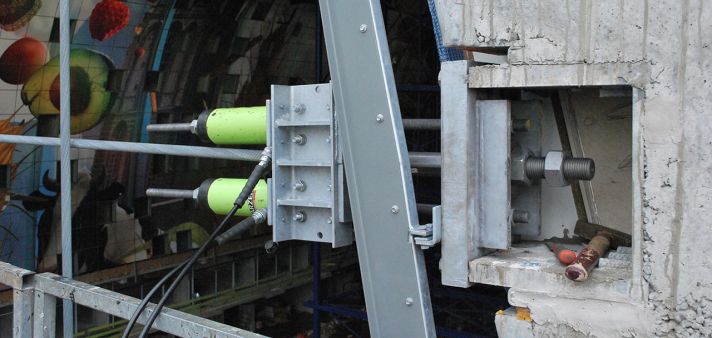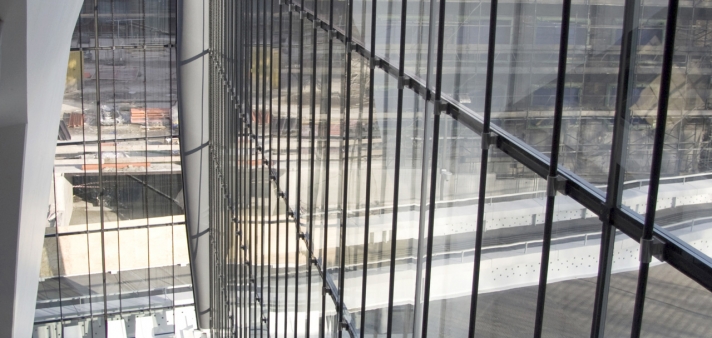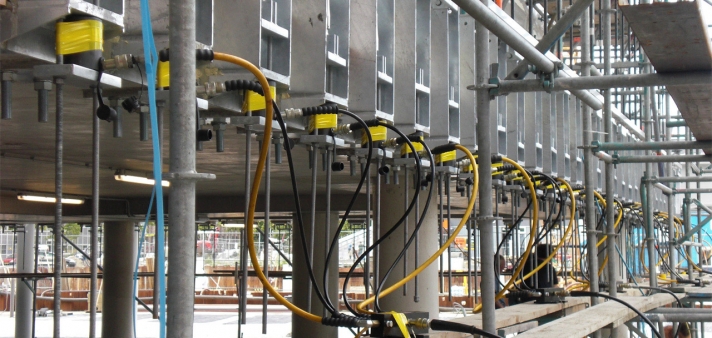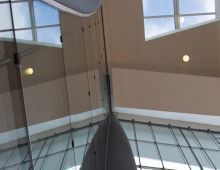Do you have innovative ideas, dreams or designs that are seemingly impossible? We are eager to solve your architectural challenges! Contact us so we can be of assistance.
Cables
Flat tensioned cable-net facade
At 52 metres the cable-tensioned facade of the OZ Building in Tel Aviv (1995) is the highest frameless facade built by Octatube. Cables carry the dead weight vertically, while tensile trusses take the wind loading horizontally left and right. This is easily the most transparent facade system in the world.
The next step in the development of this technique is the flat tensioned cable-net glazed facade. The underlying concept here involves tensioned cables running between the upper and lower structure. The glass is suspended from these by clamps. As well as the weight of the glass, the cables must also transfer the wind loading to the surrounding structure. This is made possible by the flexing of the cable. This flexing also gives rise to the structural depth required for the transfer of the wind loading. The same idea is exploited by tightrope walkers. The cables in the facade must be carefully pre-tensioned to prevent them deflecting too far in strong winds.
Tensioning within the glass cavity
The atrium of the Hogeschool INHolland college building in Delft (2010) features three highly innovative glass/composite facades, designed to move with the wind. The application of flat tensioned glass took several steps forward in this project. The Composites Laboratory initiated an innovation project in 2006 with the objective of finding fresh applications for composite materials in glazed architecture. A variety of local businesses and centres of expertise were involved, including Octatube. The result of the innovation project is the world’s slimmest glass/composite facade of 11m high.
Largest cablenet facades in Europe
The Market Hall in Rotterdam has the largest cablenet facades in Europe. Following the spectacular design of MVRDV and RHDHV the cablenet facades have dimensions of 34 meters by 42 meters on both sides. The glass facade is divided in 26 vertical and 22 horizontal cables. Together they form a suspended net, similar to a tennis racket. Laminated single glass units are fixed to the cables.
In the middle the facade can be exposed to deflections up to 70cm during extreme wind loads. A horizontal deflection of a facade with such tolerances is one of the characteristics of cablenet facades. The last couple of years suspended glass cable facades are an emerging trend in architecture, but never was it applied on such a large scale in Europe.

